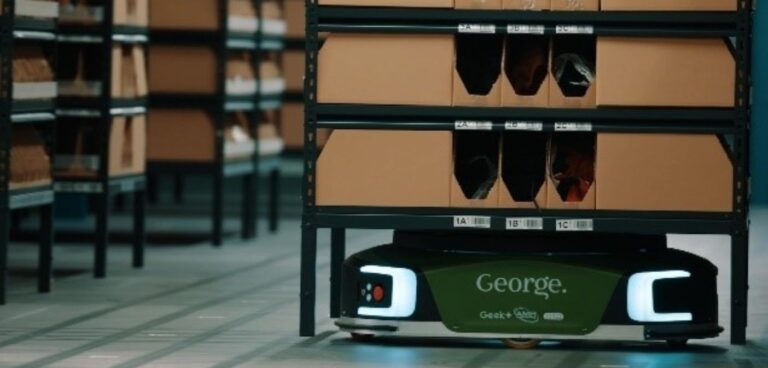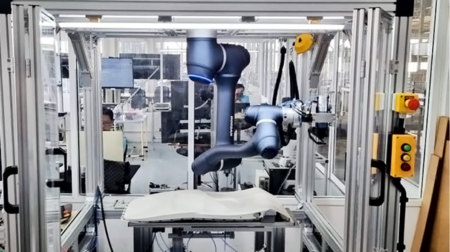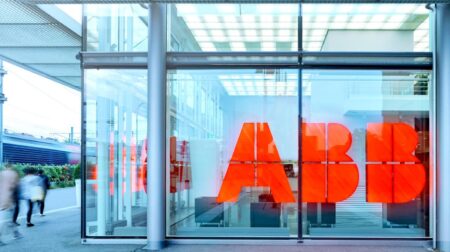Geek+, a developer of autonomous mobile robots (AMRs), has announced its collaboration with Asda Logistics Services (ALS) and AMH Material Handling to launch a new goods-to-person picking and returns system for the food and home goods retailer’s clothing brand, George.
Asda’s customised Geek+ P800 returns solution features a four-sided rack design, which is designed to increase overall pick and put-away rates.
With a four-sided pick face, those using the workstation can carry picking for fulfilment and put-away for return orders from any available slot once the rack is presented in front of them.
The solution’s developers claim that this makes the solution more user-friendly for human workers, while also speeding up the return cycle and allowing returned items to be put back on sale with a short turnaround time.
What’s more, in addition to processing 7,200 units with 700 SKUs every day, the solution will enable Asda to improve its storage capacity by using racks for more storage location, Geek+ has said.
Lit Fung, VP and managing director, international business at Geek+, said: “I am proud that another Asda site is opening in the UK for fulfilment and returns.
“Right in time for peak season, our system is uniquely positioned to handle returns.
“We accompany our customers as they grow their businesses, and the replication of success from our first project is proof of the value of our solutions.”
Chris Hall, vice president, Asda Logistics Services said: “I’m delighted to see this project going live supporting the growth of our George.com business.
“This has been a real collaborative effort across our internal teams, AMH, and Geek+.
“This is our second AMR installation in the network and I can see the value automation brings to supporting the colleague experience.”
With the system, Asda hopes to improve its ability to fulfil orders during peak season, while also handling returns from the same location.
According to Geek+, its P Series range of robots can offer a return on investment within three years, operate at 99.99% accuracy and can reduce the need for manual labour by 50% to 70%.








